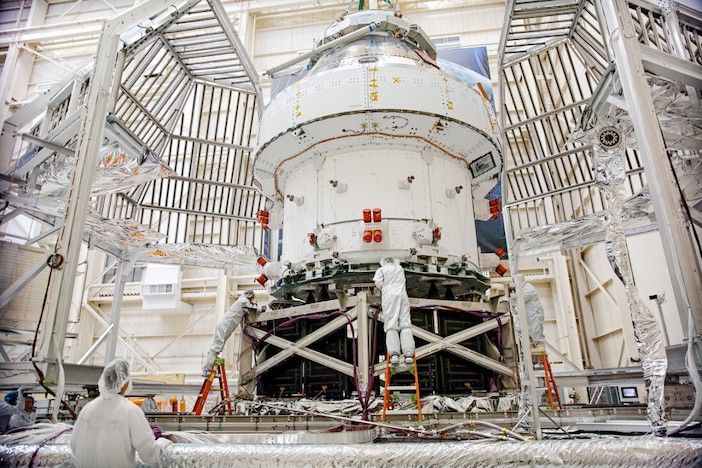The Orion spacecraft, which will be used on NASA’s Artemis 1 mission, has successfully completed several months of environmental system level testing in NASA’s thermal vacuum chamber at Plum Brook Station, Ohio.
The testing comprised of a 47-day thermal vacuum test and a 14-day electromagnetic compatibility and interference test in ambient conditions to simulate the conditions the spacecraft will encounter during its voyage to the Moon and back to Earth.
The testing proves that the spacecraft is suitable to navigate safely through the extreme conditions that it will experience in space.
The Artemis I mission is an uncrewed test flight scheduled to launch in spring 2021, before the first manned mission using the capsule, Artemis II, which is planned to happen in 2023. The uncrewed Artemis I will travel around the Moon and back to Earth.
The system level testing included the European Service Module (ESM) built by Airbus under a European Space Agency (ESA) contract. The ESM is the part of the spacecraft which will provide propulsion, power, air and water to the Orion capsule while in space.
Andreas Hammer, head of space exploration at Airbus, said, “This marks an important milestone for the Artemis I mission to the Moon. We proved to our customers ESA and NASA that the European Service Module, designed and built by engineers in Bremen and supported by companies in 10 European countries – meets the requirements to withstand the harsh conditions in space.
“The Artemis program will land the first woman and next man on the Moon and bring them back safely to Earth, we are proud to contribute to this endeavour with all our know-how, expertise and passion.”
Orion will now be returned to the Kennedy Space Center to undergo further testing and prepare the spacecraft for integration with the Space Launch System (SLS) rocket.
Airbus in Bremen is already building the second Service Module for Artemis II. The ESM is cylindrical in shape and about four meters in diameter and height. It has four solar arrays, 19 metres across when unfurled, that generate enough energy to power two households.
The service module’s 8.6 tonnes of fuel can power one main engine and 32 smaller thrusters. In addition to its function as the main propulsion system for the Orion spacecraft, the ESM will be responsible for orbital maneuvering and position control. It also provides the crew with the central elements of life support such as water and oxygen and regulates thermal control while it is docked to the crew module. Furthermore, the service module can be used to carry additional payloads.





